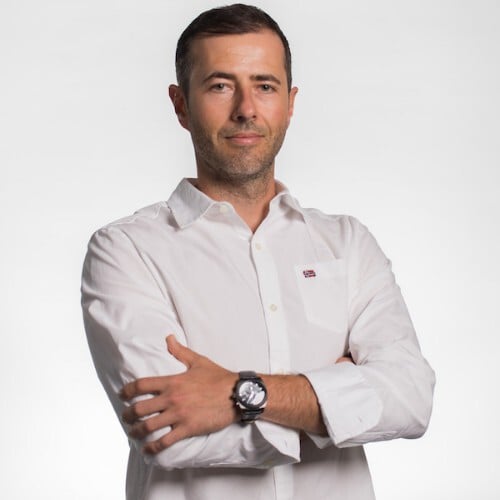“I started the process of succession planning and developing the organization’s next leaders on my first day in the company,” tells us Vassil Popovski, VP of Product Development at mobile customer engagement platform Leanplum and General Manager at the Sofia entity.
Let’s rewind the conversation back to the beginning. Vassil had just shared with The Recursive that he will be departing from Leanplum in January 2022 after driving the expansion of the Bulgarian site to more than 60 people. “Why would you leave a soonicorn?” we asked.
“I’ve done my job here and it’s time for a new challenge. Managers are most successful when things are going well without them being around to control everything. Over the past summer, I took a 6-week-long holiday and the team didn’t call me for work even once. At this point, it became very clear to me that the new leaders in Leanplum are ready to take over and it’s time for me to hand over the torch to them,” Vassil explained.
There will be three people who will succeed him at the helm in Sofia. Dr. Hristo Pentchev will take the role of site lead as a Director Product Development Operations and Technical Program Management. Yasen Trifonov is being promoted to Head of Engineering, and Ivailo Ivanov will continue to work as Senior Director of Product Management, being responsible for the global product strategy and vision of Leanplum’s customer engagement platform.
For the rest of our meeting, we spoke with the four of them about the succession management practices at Leanplum. The departure of key executives can often have a big impact on an organization, especially when we’re talking about startups or fast-growing scaleups. So, how can a company prepare best? And what does it take for employees to be developed to assume leadership roles?
Clear responsibilities and inclusive decision-making
First of all, to define responsibilities, the Leanplum team is using a RACI matrix. For every activity, it’s clear who in the organization needs to be responsible, accountable, consulted, or informed.
“Looking at this matrix, I’ve always tried to include other managers in taking important decisions for the company – whether it’d be a new process, a change in product strategy, or something else. When others are part of the decision-making process, this serves as an informal mentoring – people get to see first hand how I think and how I deal with certain situations,” Vassil points out.
Transition periods are key for succession management
“When I announced internally that I was leaving the company back in September, we made Ivo, Hristo, and Yasen get into their new roles immediately. For the remaining months of my time at Leanplum, my goal was to be their consultant and safety net. This approach gave them enough time to get used to their new responsibilities. There are not that many companies that follow this practice – new leaders are thrown into deep water and everyone just hopes for the best,” Vassil states.
Transition periods are an essential element of Leanplum’s operations at all levels in the hierarchy, not just for top executives. Usually, people are preparing for their new roles for months. During this period, the person currently holding a given position helps the one to be promoted with advice, resources, and incremental increase in responsibilities.
Psychological safety
For me, one of the things that helped me grow the most as a leader in Leanplum was the psychological safety within the organization. Vasko let me be impulsive and very direct when communicating – because of my personality I do need such an environment to thrive,” Hristo shares.

Psychological safety has been proven to increase the chances of people acting as leaders. As Google research shows, when team members feel safe together, they’re more confident in admitting mistakes, more likely to collaborate, and to assume new responsibilities.
“People can openly share their ideas and disagree with me. We are not trying to constrain people, we are looking for how to best use everyone’s strengths,” Vassil adds.
Servant leadership
While all team members in Leanplum have a set of specific job responsibilities, everyone is expected to act as a leader. This enables them to grow in their positions following their own ambitions and strengths.
One of the most interesting leadership development stories at Leanplum is that of Yasen Trifonov – the new head of engineering. He joined the company six years ago as an intern and made quick progress through the ranks of the company. As an engineer, Yasen changed several teams within Leanplum, which gave him a good understanding of the whole product. Greater responsibilities also allowed him to grow personally and professionally. “Every 3 to 6 months the problems I had to solve changed and this was a great learning opportunity,” he states.

Now he will be leading the entire development team and this promotion is based on recognition from his peers. “When we asked them who will help you improve the most – the answer was unequivocally Yasen. For us, as a company, the concept of servant leadership is critical, so it’s important for any leader in Leanplum to be trusted by the rest of their team,” Vassil shares.
In the servant leadership philosophy, the leader’s main purpose is to share power, put the needs of employees first and help them grow.

What’s next for Leanplum
With the new leadership trio, Leanplum is pretty much expected to continue the one thing the company has been doing for a while now – grow. Grow to new markets, grow its product and engineering team in Sofia, and grow the business of the company in general. “We have a clear vision where we’re going, we’ve done a good job when it comes to scaling the capabilities of our product infrastructure, now we just have to continue with great execution,” Ivailo Ivanov asserts.
***Recommended leadership book by Vassil Popovski: ‘The New Leaders’ by Paolo Ruggeri.***








